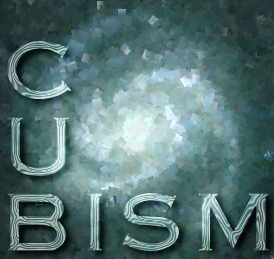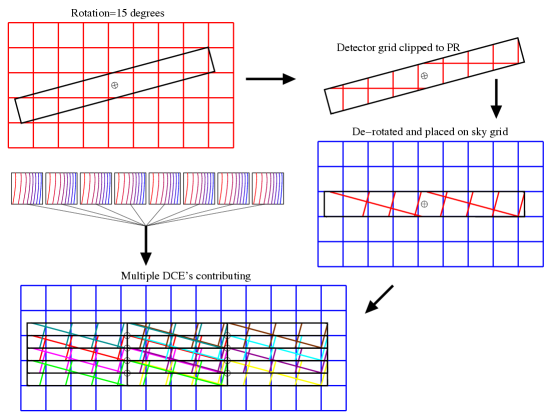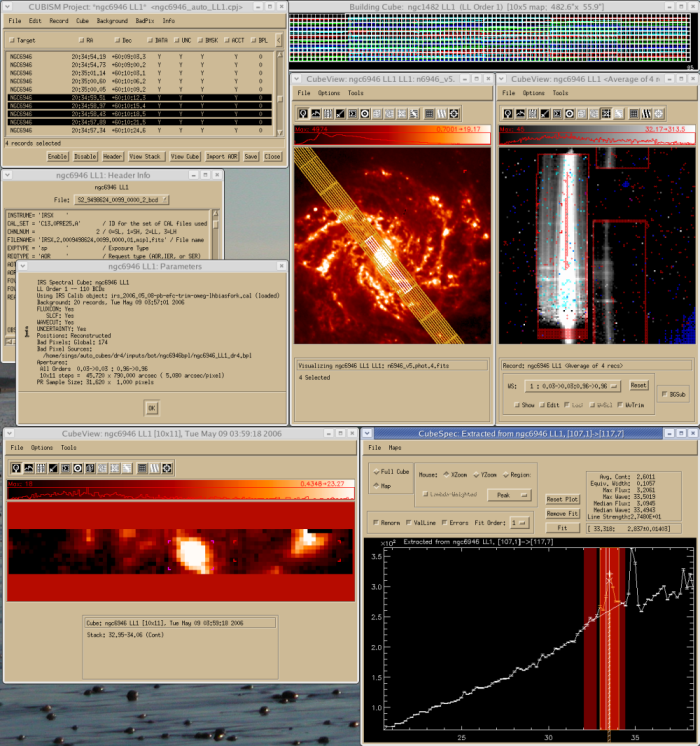CUBISM
 CUBISM, The CUbe Builder for IRS Spectra
Maps, is a tool for constructing spectral cubes, maps, and
arbitrary aperture 1D spectral extractions from sets of mapping mode
spectra taken with Spitzer's IRS spectrograph.
Developed by the SINGS team to fulfill, in
part, its Legacy proposal commitments, CUBISM has been released and is
available from
the SSC. It is optimized for non-sparse maps of
extended objects, e.g. the nearby galaxy sample of SINGS, but can be
used with data from any spectral mapping AOR.
CUBISM, The CUbe Builder for IRS Spectra
Maps, is a tool for constructing spectral cubes, maps, and
arbitrary aperture 1D spectral extractions from sets of mapping mode
spectra taken with Spitzer's IRS spectrograph.
Developed by the SINGS team to fulfill, in
part, its Legacy proposal commitments, CUBISM has been released and is
available from
the SSC. It is optimized for non-sparse maps of
extended objects, e.g. the nearby galaxy sample of SINGS, but can be
used with data from any spectral mapping AOR.
Reference
The algorithm and design of CUBISM are documented in the following paper:
Spectral Mapping Reconstruction of Extended Sources, J.D.T. Smith et al., 2007, PASP 119, 1133.
Please reference this paper for all scientific uses of CUBISM.
Design
CUBISM is divided into three main components:- CubeProject: For organizing and interrogating input BCD's, setting up cube build parameters, and building the cube.
- CubeView: An all-purpose viewer for examining individual BCD's, editing the aperture over which cubes are built, navigating through spectral cubes plane-by-plane, extracting spectra from cubes over any spatial aperture, along with many traditional viewer features.
- CubeSpec: The viewer for extracted 1D spectra, permitting peak and continuum regions to be defined and line or feature maps to be created (with or without continuum fitting).
Parts of CUBISM derive from JD Smith's thesis work, and elements of SCOREX, a tool written for SCORE, the IRS Short-High Spectrograph proto-type instrument. CUBISM is written in IDL.
Availability
- July, 2011:
- A version of CUBISM (v1.8) compatible with the final IRS reprocessing pipeline (S18.18) has been released.
Algorithm
 CUBISM employs a custom flux-conserving algorithm somewhat similar to drizzling
to map the partial pixels from overlapping, rotated individual 2D BCD
spectra into a single spectral cube with consistent spatial and spectral
sampling. A cartoon at right of this process shows how individual
pseudo-rectangular regions of constant wavelength (which do not align
with the detector array) are clipped and combined together with data
from other BCDs on a single sky grid. For the high-resolution modules,
orders which overlap in wavelength are combined by clipping individual
pixels over more than one wavelength plane in the final cube.
CUBISM employs a custom flux-conserving algorithm somewhat similar to drizzling
to map the partial pixels from overlapping, rotated individual 2D BCD
spectra into a single spectral cube with consistent spatial and spectral
sampling. A cartoon at right of this process shows how individual
pseudo-rectangular regions of constant wavelength (which do not align
with the detector array) are clipped and combined together with data
from other BCDs on a single sky grid. For the high-resolution modules,
orders which overlap in wavelength are combined by clipping individual
pixels over more than one wavelength plane in the final cube.
Screenshot
 A screenshot showing CUBISM working on the LL radial strip of NGC6946.
A screenshot showing CUBISM working on the LL radial strip of NGC6946.